-
Fukui Prefecture’s Only National Treasures, Hidden in the Mountains
Heading from Obama city center toward the mountains in the southeast, you will find the quiet rural landscape of the Matsunaga district. Along the way there is a bronze statue of a child with the word hitoyasumi (meaning “take a break”) engraved on the base, reminding us that many people visit the area for cycling and walking.
Myotsuji Temple is located in a valley at the foot of the mountains bordering Matsunaga and is home to the only two National Treasures in Fukui Prefecture. It is said that the great general Sakanoue Tamuramaro (758–811) founded the temple in 806 to appease the souls of the Emishi, an indigenous people who were subjugated during his campaign in the Tohoku region in northeastern Japan.
From the parking lot, cross the vermilion bridge over the Matsunaga River and ascend the steep stairs to the temple gate. You will be greeted by a pair of Kongo Rikishi guardian statues, each standing at an impressive 1.9 meters. The remaining red color, bulging muscles, and raised blood vessels on the sculptures are characteristic of the Kamakura period (1185–1333), and the statues are considered the oldest Kongo Rikishi in Obama.
As you proceed further, the temple’s main hall and three-story pagoda gradually come into view. According to legend, a sage once appeared to Sakanoue Tamuramaro in a dream, instructing him to find and cut down a yuzuriha tree and make three statues from the wood. It is said that the statues depicting Yakushi Buddha (the deity of medicine), Gozanze Myo-o (a Wisdom King), and Jinja Taisho (a guardian deity) that are now enshrined in the main hall are the ones that were carved by Tamuramaro. The tree featured in the legend is referenced in the temple’s formal name “Yuzurizan,” and a large yuzuriha grows on the grounds near the bell tower. -
-
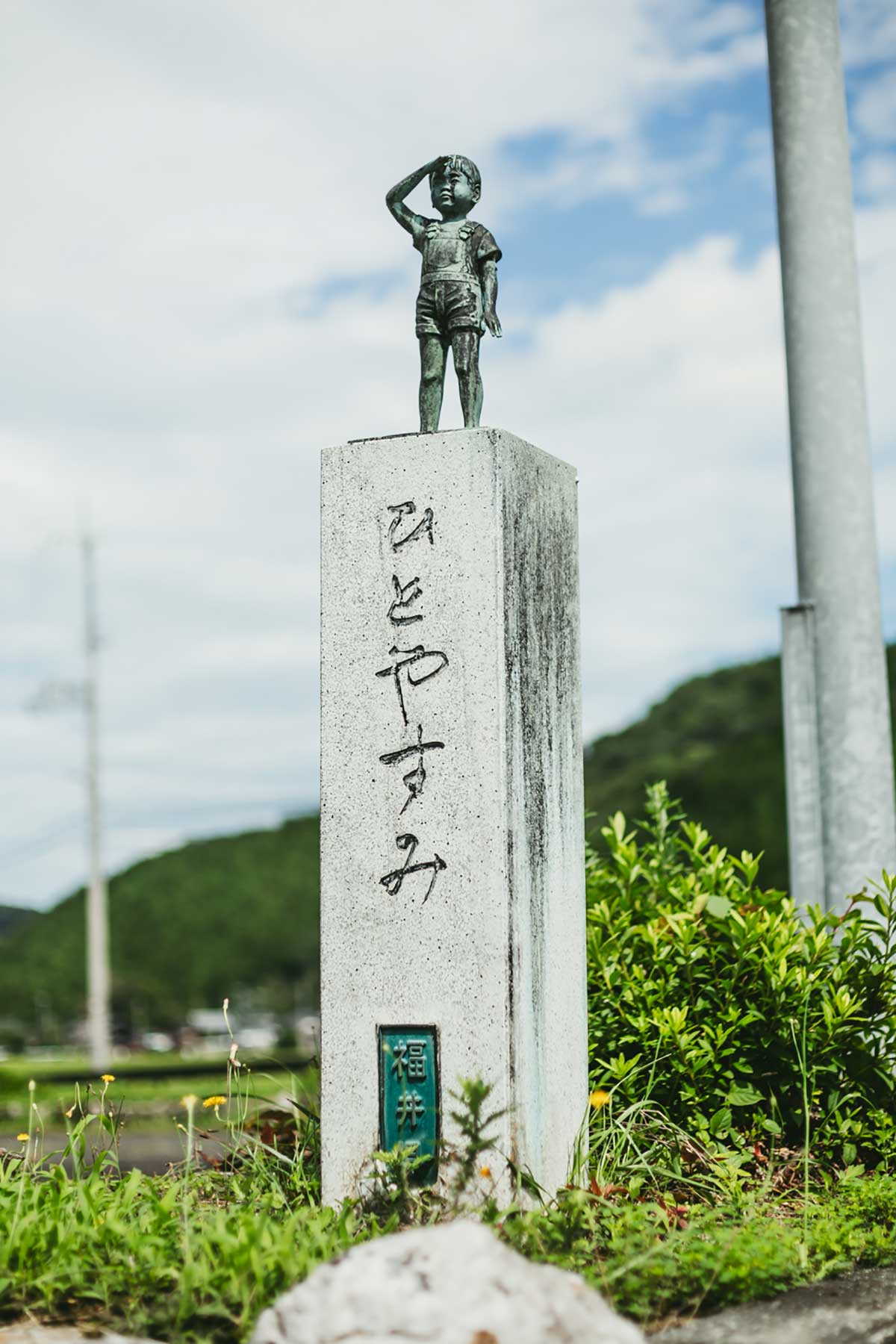 A bronze statue of a child on the way to Myotsu-ji Temple
A bronze statue of a child on the way to Myotsu-ji Temple -
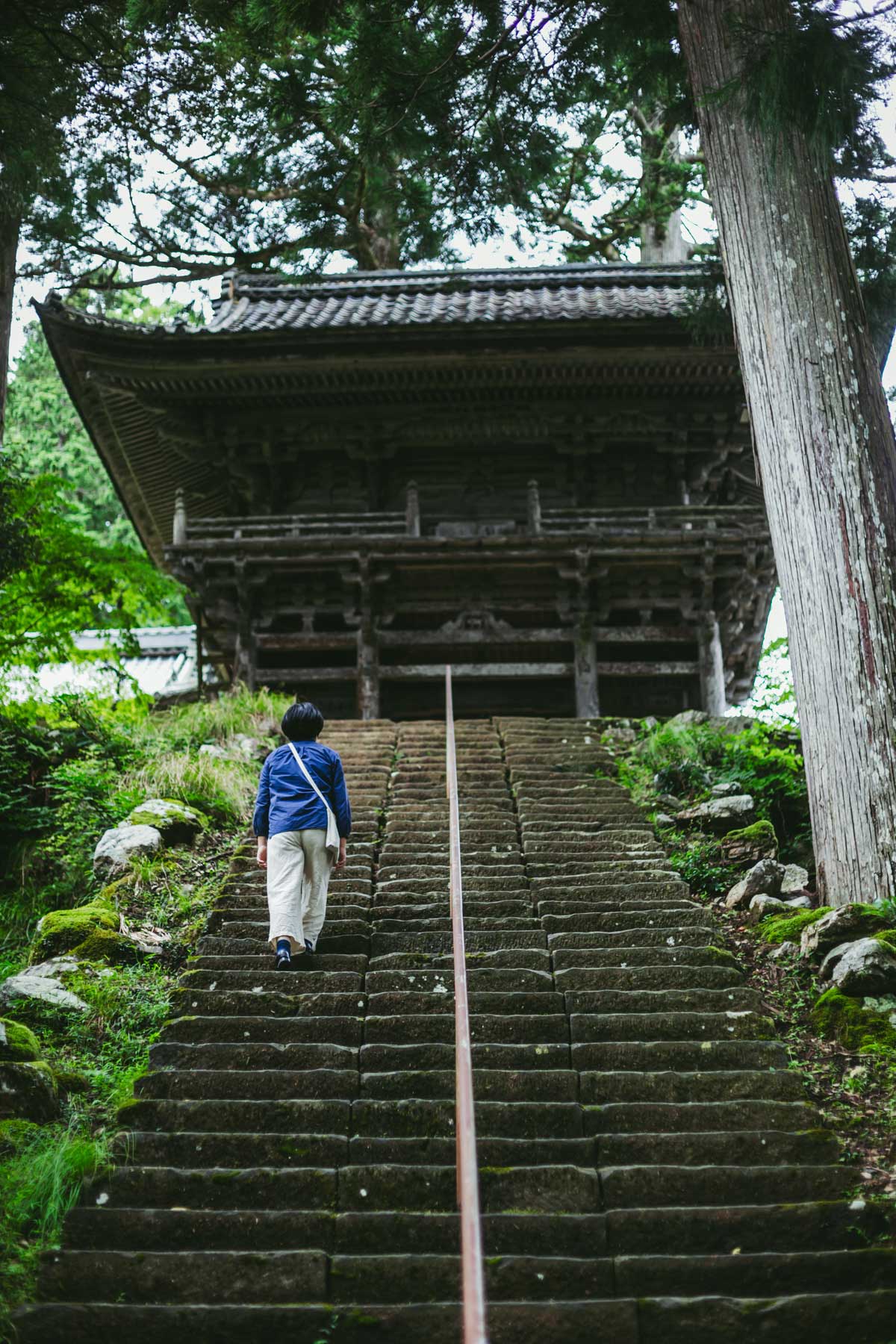 Stairs leading up to the temple gate
Stairs leading up to the temple gate
-
-
Expressions of Serenity and Rage
The remarkable three-story pagoda and main hall of Myotsuji may remind you of the grand temples of Nara, such as Todaiji and Horyuji, but because of the rural location, you will also be able to hear the wind rustling through the trees and see freshwater crabs and frogs crossing cobblestone paths. The cool, clean air that greets you as you ascend the stairs also contributes to the enchanting atmosphere.
The main hall of Myotsuji was erected during reconstruction in 1258, and its gabled roof is thatched with hinoki cypress bark. The three-story pagoda was built in 1270 and also has a cypress-bark roof. The interior of the pagoda features vibrantly colored Buddhist paintings and houses golden statues of Shakyamuni Buddha (the historical Buddha) and Amida Buddha (the Buddha of Immeasurable Light and Life), each with two attendant bodhisattvas.
First, let’s enter the main hall. Bow your head and place your hands together to pay respects to the statue of Yakushi Buddha in the altar. The seated statue of was carved in the late Heian period (794–1185) and portrays Yakushi with half-closed eyes, the right hand making an open-palmed mudra (symbolic gesture) of dispelling fear. Gazing upon the benevolent expression of the sacred figure, it is difficult not to become mesmerized. After listening to an explanation provided by the chief abbot or one of the monks, you can take a closer look around the inner sanctum.
To the left of Yakushi Buddha is a large statue rarely seen in most temples that portrays the guardian deity Jinja Taisho. The statue is distinguished by a skull on its head, a child’s face at the waist, a snake in the left hand, and a trident in the right hand.
To the right of Yakushi Buddha is a similarly large statue of Gozanze Myo-o, a Wisdom King who conquers greed, hatred, and foolishness. The figure has four faces and eight arms and displays an expression of intense wrath. According to Buddhist tradition, Gozanze Myo-o vanquished Daijizaiten, the ruler of the three realms of desire. The statue depicts the deity trampling Daijizaiten and his consort Uma underfoot. The mudra of subjugation formed by two of the hands of Gozanze Myo-o is as striking as the three eyes that protrude from the statue’s foremost visage. -
-
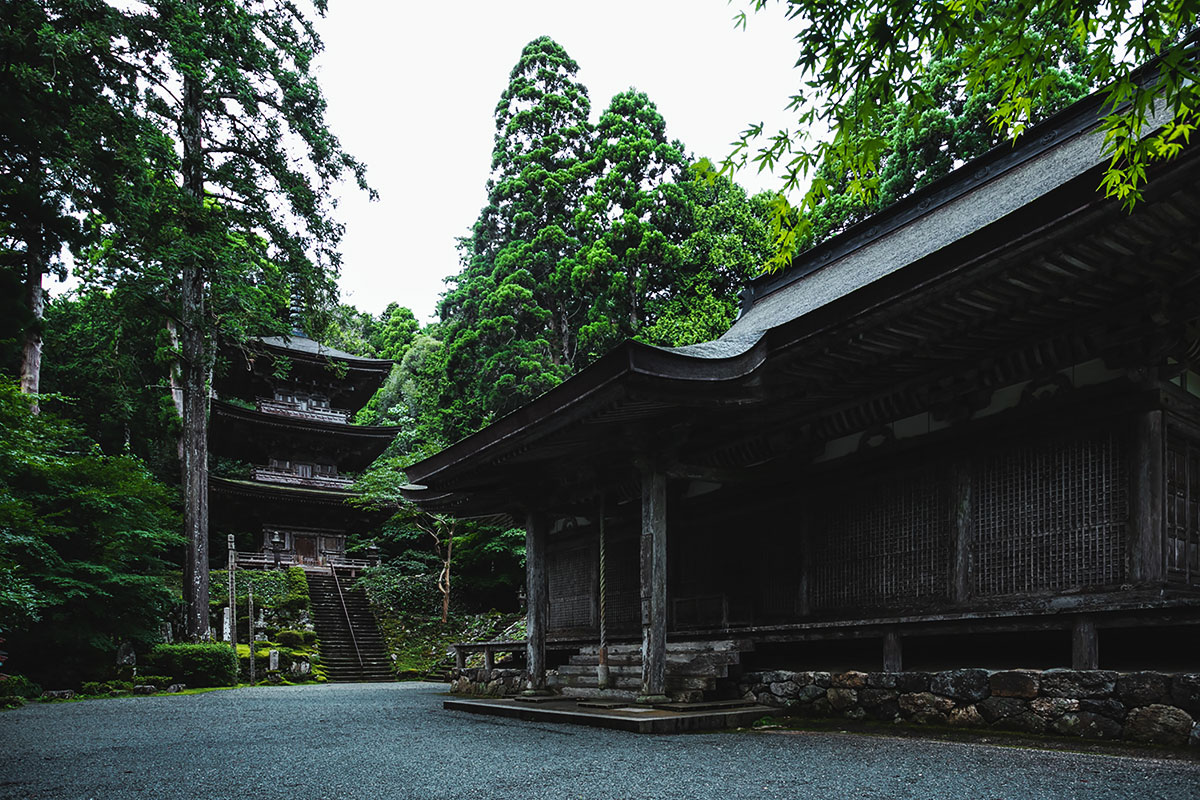 Three-story pagoda and main hall
Three-story pagoda and main hall -
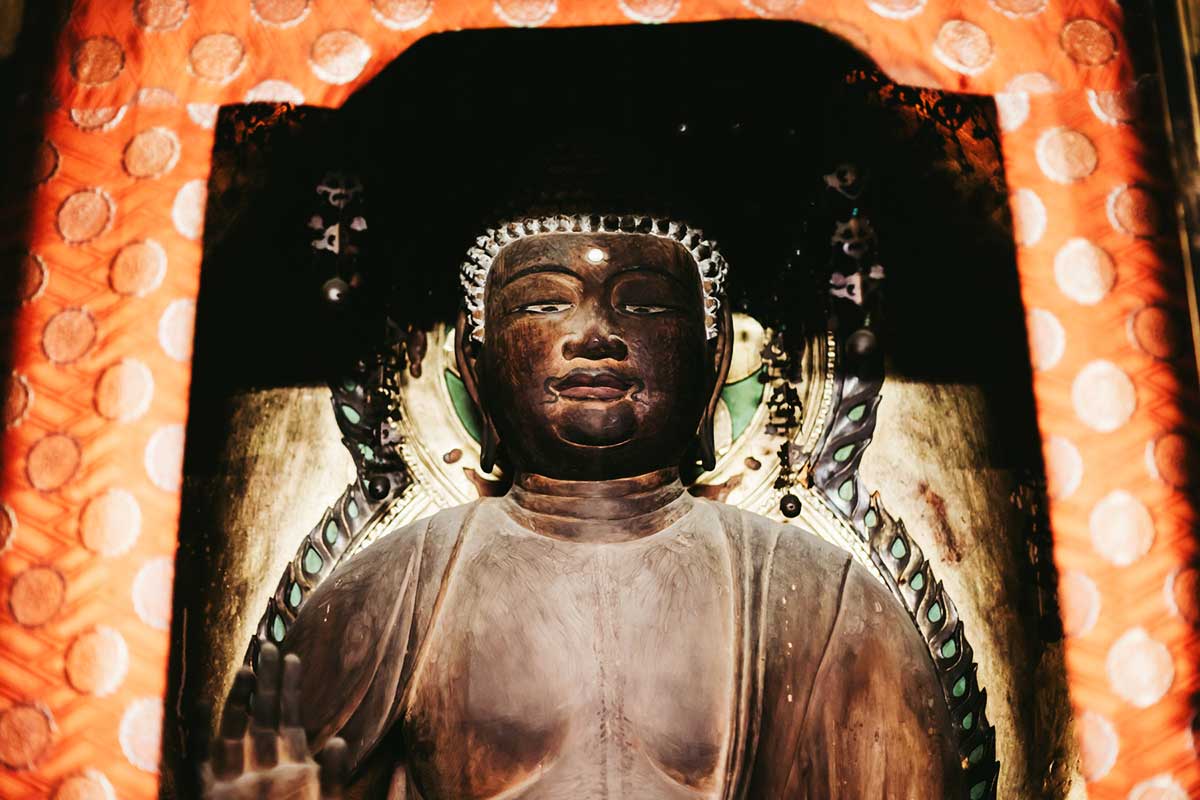 Seated statue of Yakushi Nyorai (Medicine Buddha)
Seated statue of Yakushi Nyorai (Medicine Buddha)
-
-
Looking Out Over Matsunaga District
After admiring the Buddhist statues in the main hall, walk back outside and take a closer look at the three-story pagoda. It is about 22 meters in height, and the sorin finial that tops the roof contributes an additional 7 meters, creating a truly impressive sight. The rings of the sorin gradually decrease in diameter in a way that gives the entire structure a sense of equilibrium and poise, inspiring visitors to find their own inner balance.
As you descend the stairs on your way back, look out over Matsunaga district surrounded by mountains. What did the scenery look like in ancient times? Certainly, there were days when the wind blew gently as it does now, and days when rains poured down upon thatched-roof farmhouses and flooded the rice paddies. Imagine the people of the past who ascended these very stairs and clasped their hands in awe as they first glimpsed the towering temple buildings and then entered to pray before the otherworldly Buddhist statues covered in bright pigment and gold foil. -
-
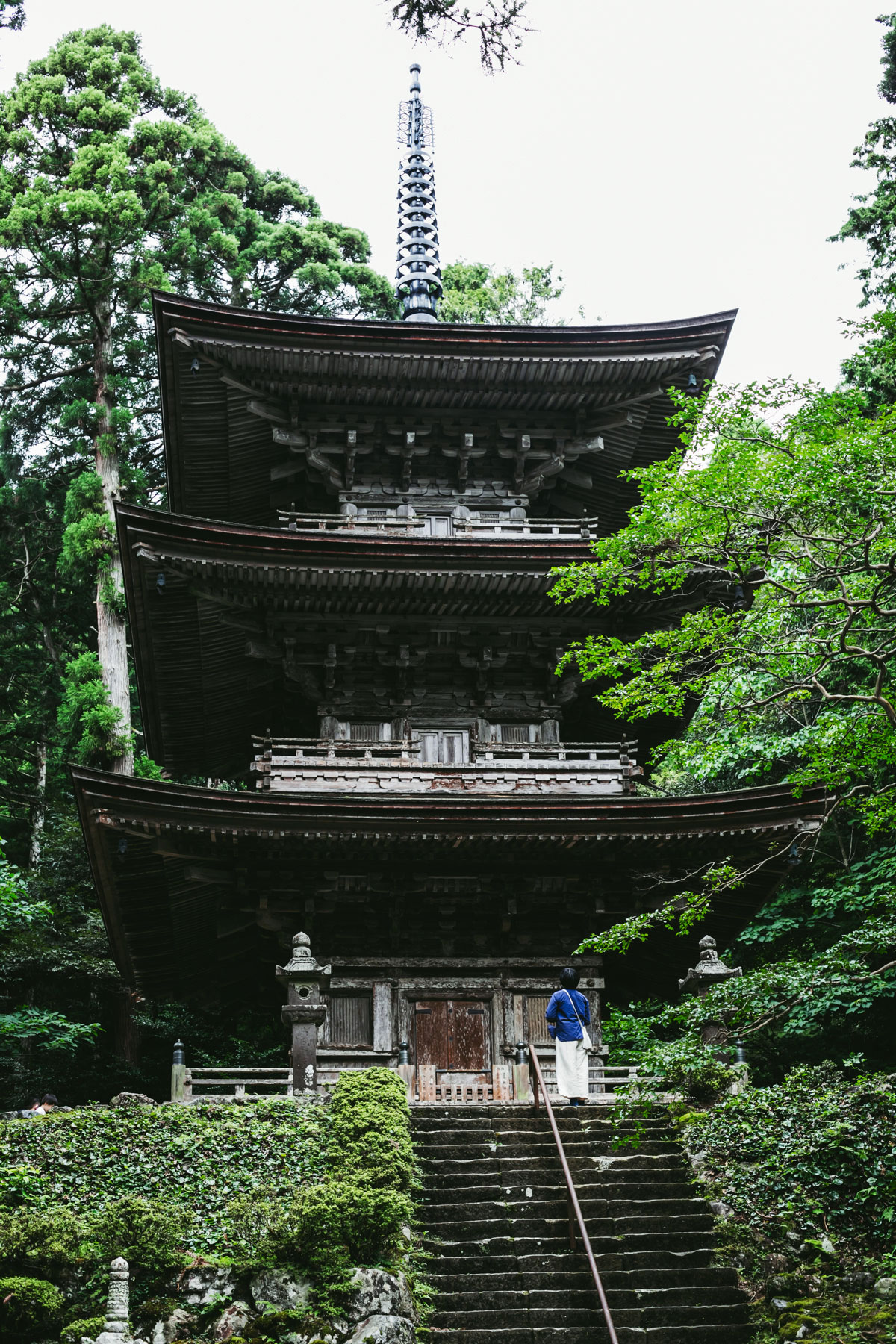 The three-story pagoda seen from the porch of the main hall
The three-story pagoda seen from the porch of the main hall
-
